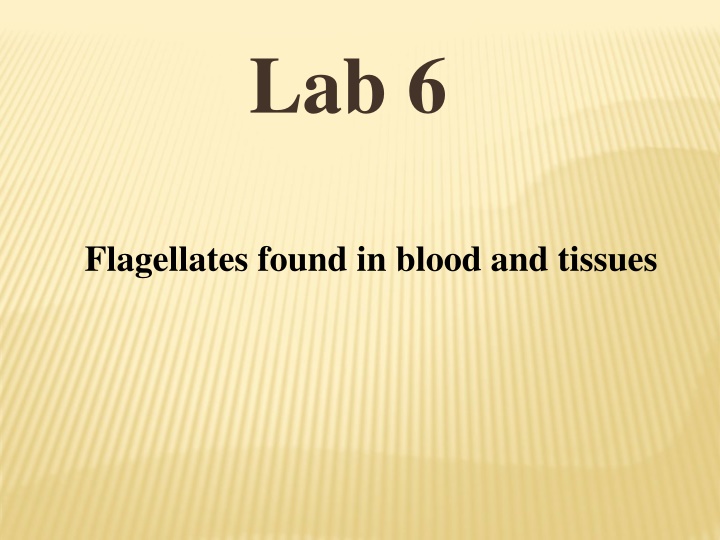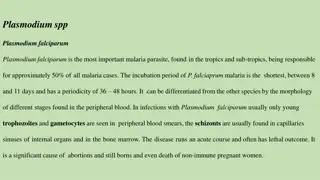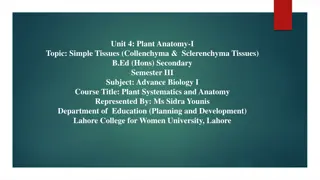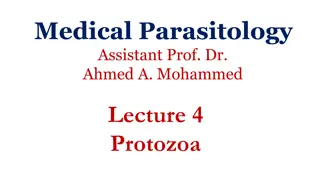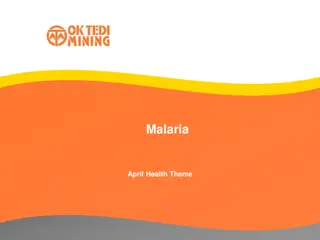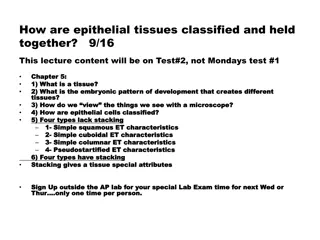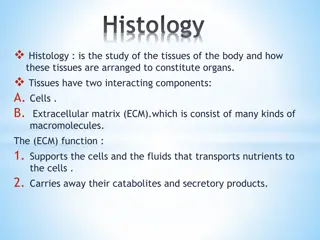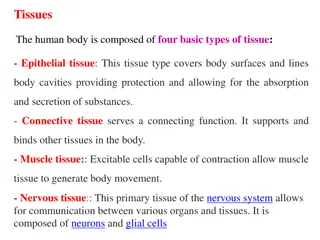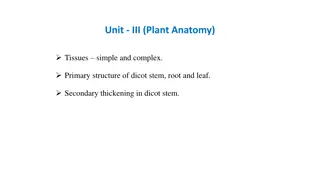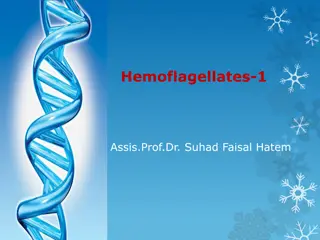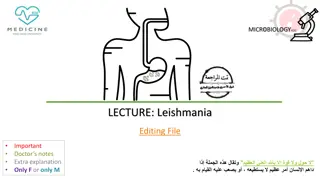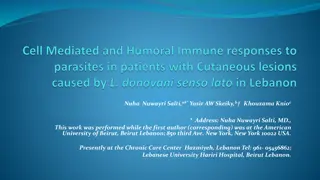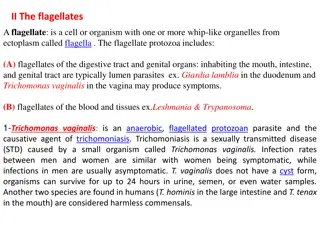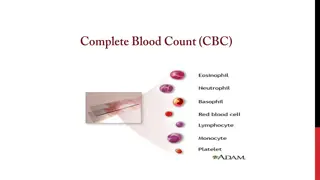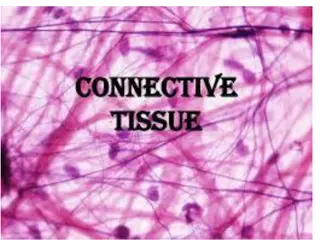Flagellates Found in Blood and Tissues - Leishmania and Plasmodium
Flagellates such as Leishmania and Plasmodium are protozoan parasites found in blood and tissues, causing diseases like cutaneous leishmaniasis and malaria. Leishmania has three pathogenic species: L. tropica, L. donovani, and L. braziliensis, each leading to different types of infections. The life cycle of these parasites involves two hosts: a mammalian host and an insect vector such as the sand fly. Diagnosis methods vary for each Leishmania species. Additionally, the super class Sporozoa includes Plasmodium species, characterized by the formation of spore-like oocysts containing sporozoites. Malaria parasites have a complex life cycle involving both asexual and sexual phases in humans and female Anopheles mosquitoes.
Download Presentation

Please find below an Image/Link to download the presentation.
The content on the website is provided AS IS for your information and personal use only. It may not be sold, licensed, or shared on other websites without obtaining consent from the author.If you encounter any issues during the download, it is possible that the publisher has removed the file from their server.
You are allowed to download the files provided on this website for personal or commercial use, subject to the condition that they are used lawfully. All files are the property of their respective owners.
The content on the website is provided AS IS for your information and personal use only. It may not be sold, licensed, or shared on other websites without obtaining consent from the author.
E N D
Presentation Transcript
Lab 6 Flagellates found in blood and tissues
3- Leishmania Spp (flagellates found in the blood and tissues). There are three species of Leishmania Spp. pathogenic for human :- Ex.1:-L. tropica: - Causes the cutaneous leishmaniasis (oriental sore or Baghdad boil) . Ex.2:-L. donovani: - Causes the visceral leishmaniasis (kala azar). Ex.3:-L. braziliensis: - Causes the mucocutaneous leishmaniasis (Espundia).
All members of the flagellate genus Leishmania pass their life cycle in two hosts, the mammalian host (final host) and the insect vector sandfly (intermediate host). Sand fly
The parasite exists in 2 forms :- 1. Amastigote: - Is an ovoid or rounded cell, hasing a nucleus and kinetoplast in front of it. This stage found in the mammalian host. Leishmania Spp. amastigotes
1. Promastigote: - has a spindle shape carrying a single flagellum, hasing a nucleus and kinetoplast lies near the anterior end. And it is the infective stage. This stage found in the sand fly. Leishmania Spp. promastigotes
diagnosis :- 1. L. donodvani: - Amastigote can be demonstrated by staining bone marrow, lymph node, nasal scrapings, liver biopsies or splenic aspiration specimens. 2. L. tropica & L. braziliansis: - Demonstration of the parasite is possible in stained films from slit-skin smears taken from the indurated edge of an ulcer, biopsy of the margin of the ulcer and from mucosal scrapings in mucocutaneous type.
3) Super class: -Sporozoa Ex: - Plasmodium Spp. General characteristics :- Protozoan parasites characterized by the formation of spore-like (oocysts) containing sporozoites (infective stage). The life cycle of malaria parasites comprises 2 stages :- 1. An asexual phase occurring in man ( intermediate host) 2. Sexual phase occurring in the female anopheles mosquito (final host).
4 different species of malaria parasite infect man :- Ex.1:- Plasmodium vivax (causes the benign tertian malaria). Ex.2:- P. falciparum (causes malignant tertian malaria). Ex.3:- P. malariae (causes benign quartan malaria). Ex.4:- P. ovale(causes ovale malaria). Laboratory diagnosis:- Malaria parasite in thin blood film. Stained by leishman or giemsa at ph 7.2.
Plasmodium vivax ring stage in RBC Plasmodium vivax schizont and Trophozoite stages in RBC's
